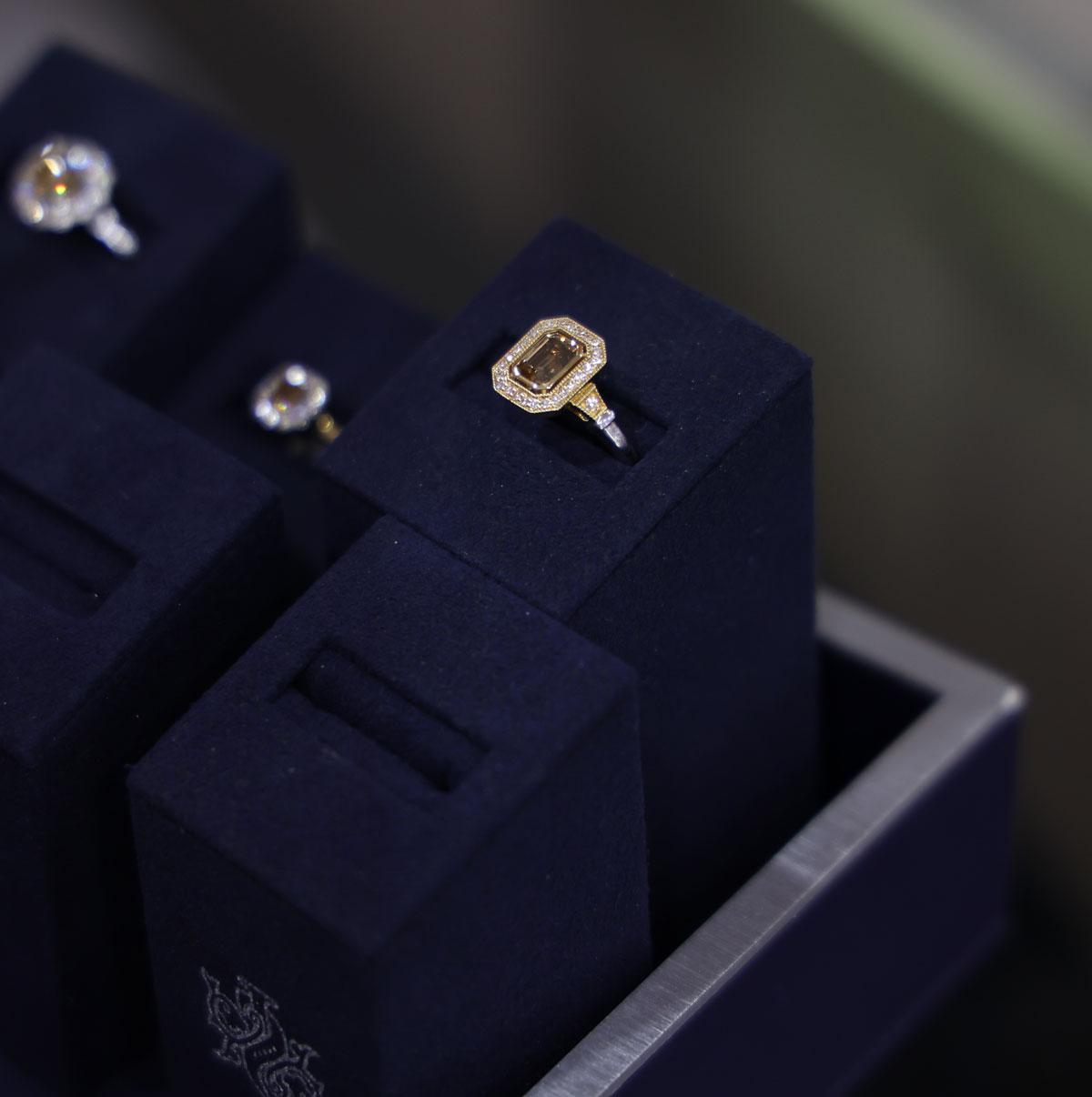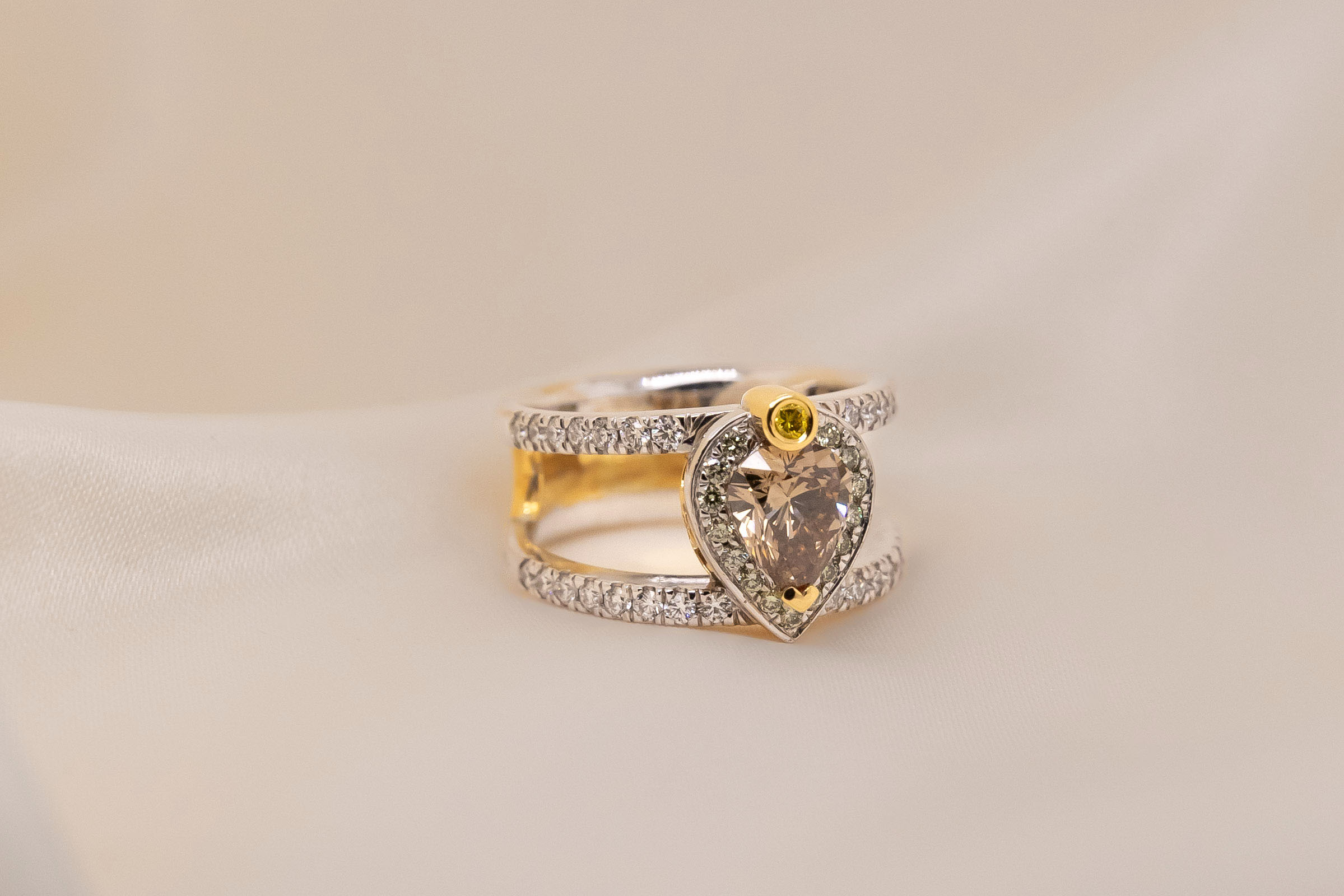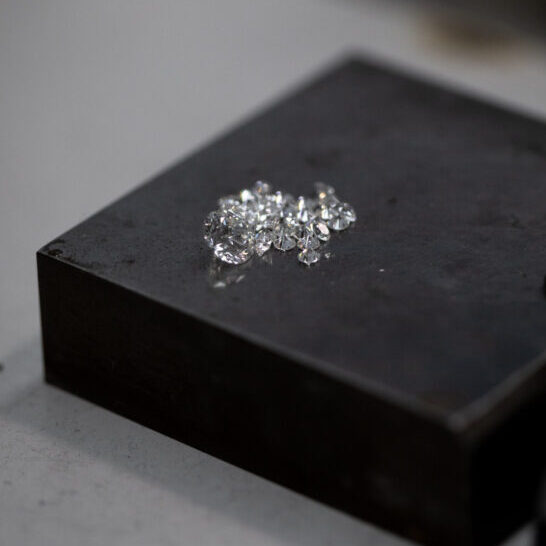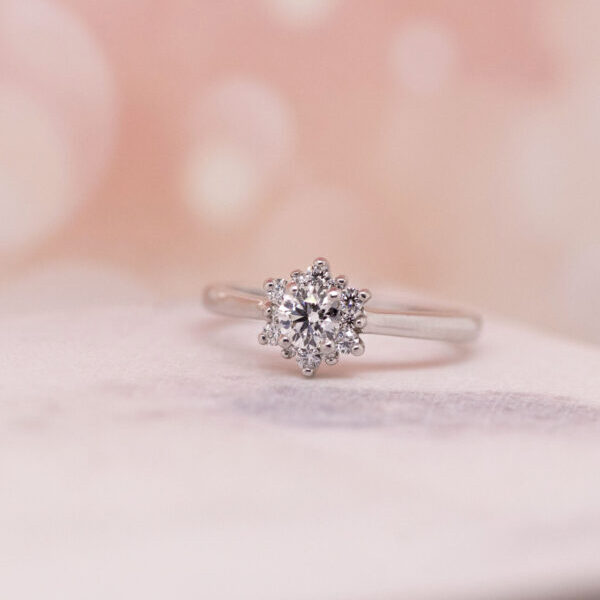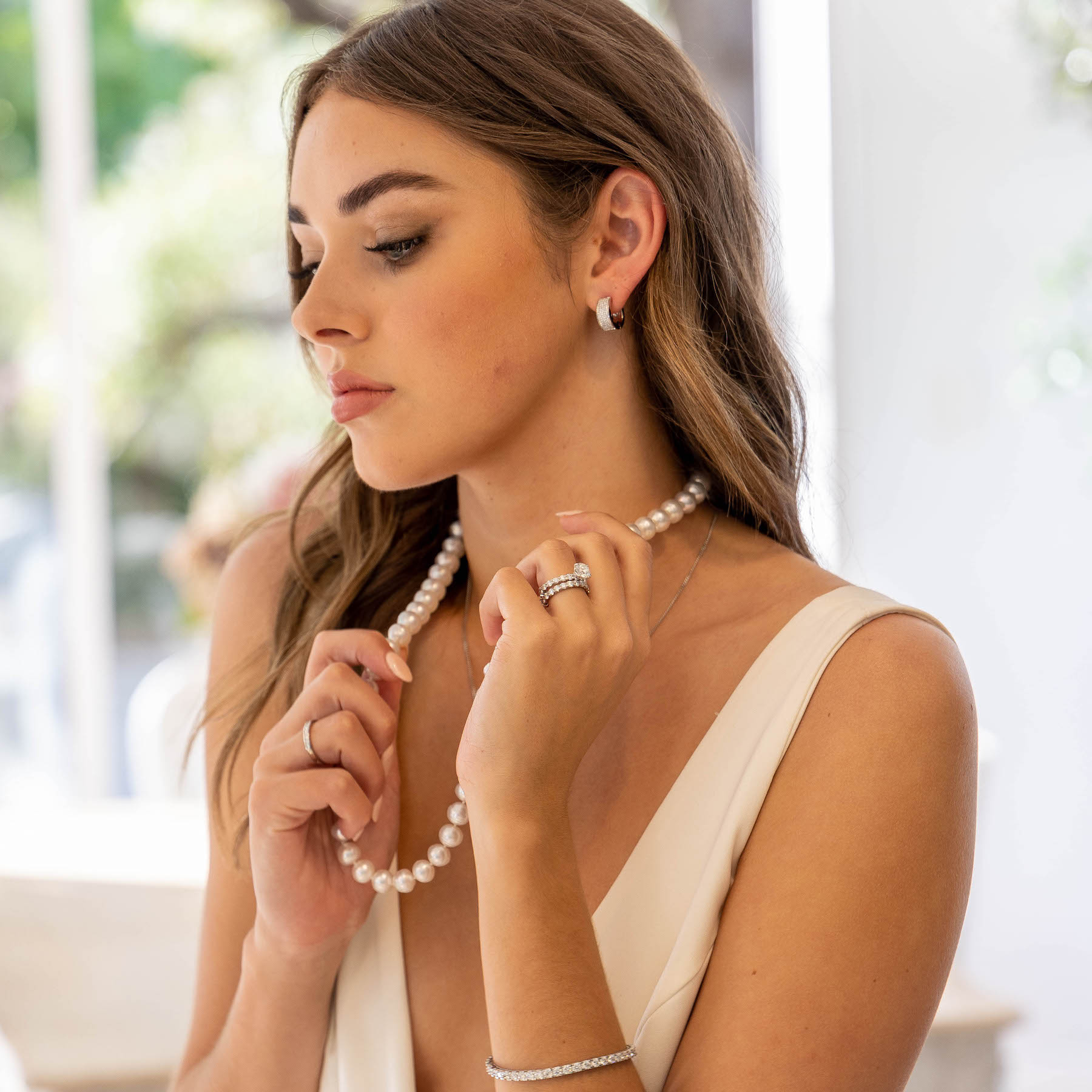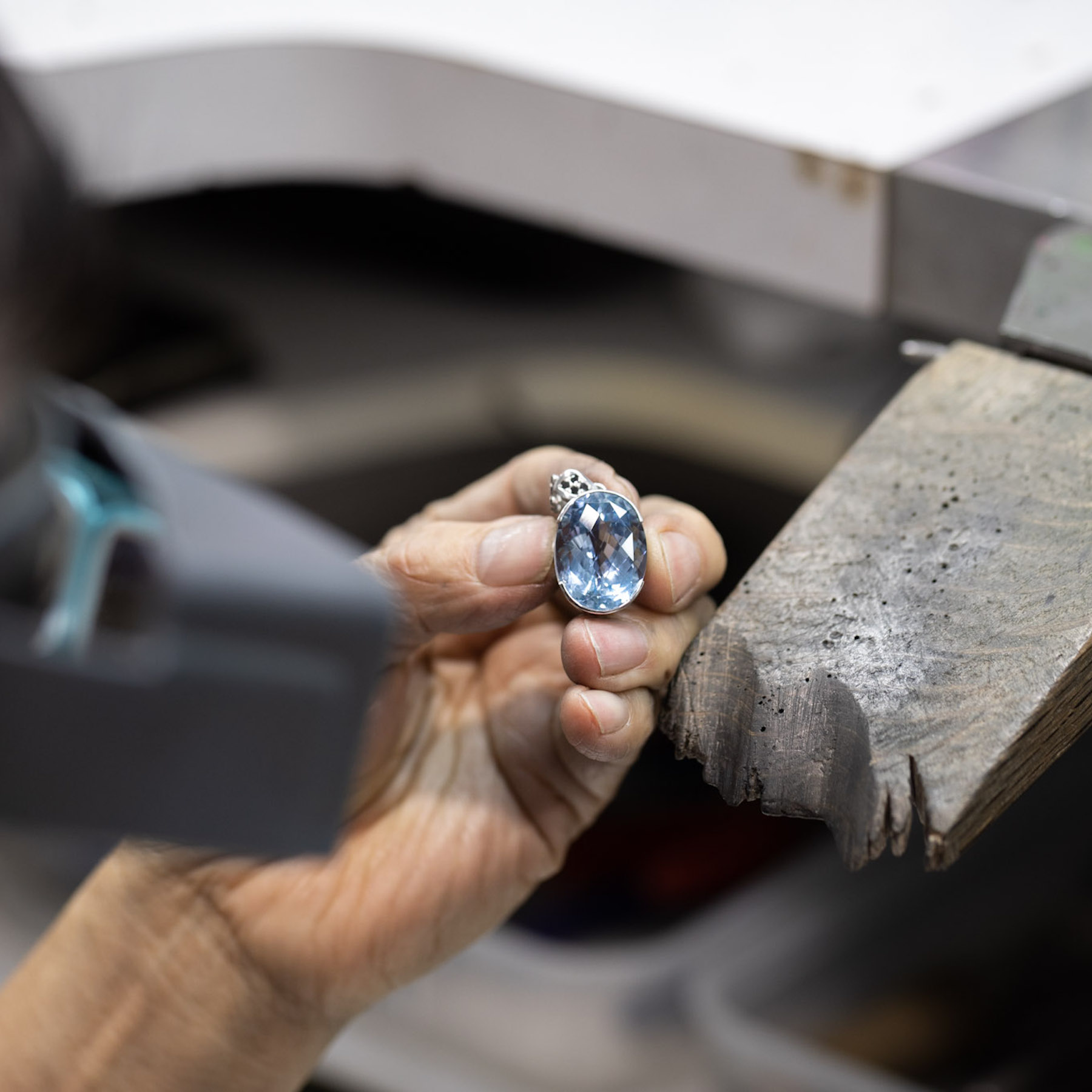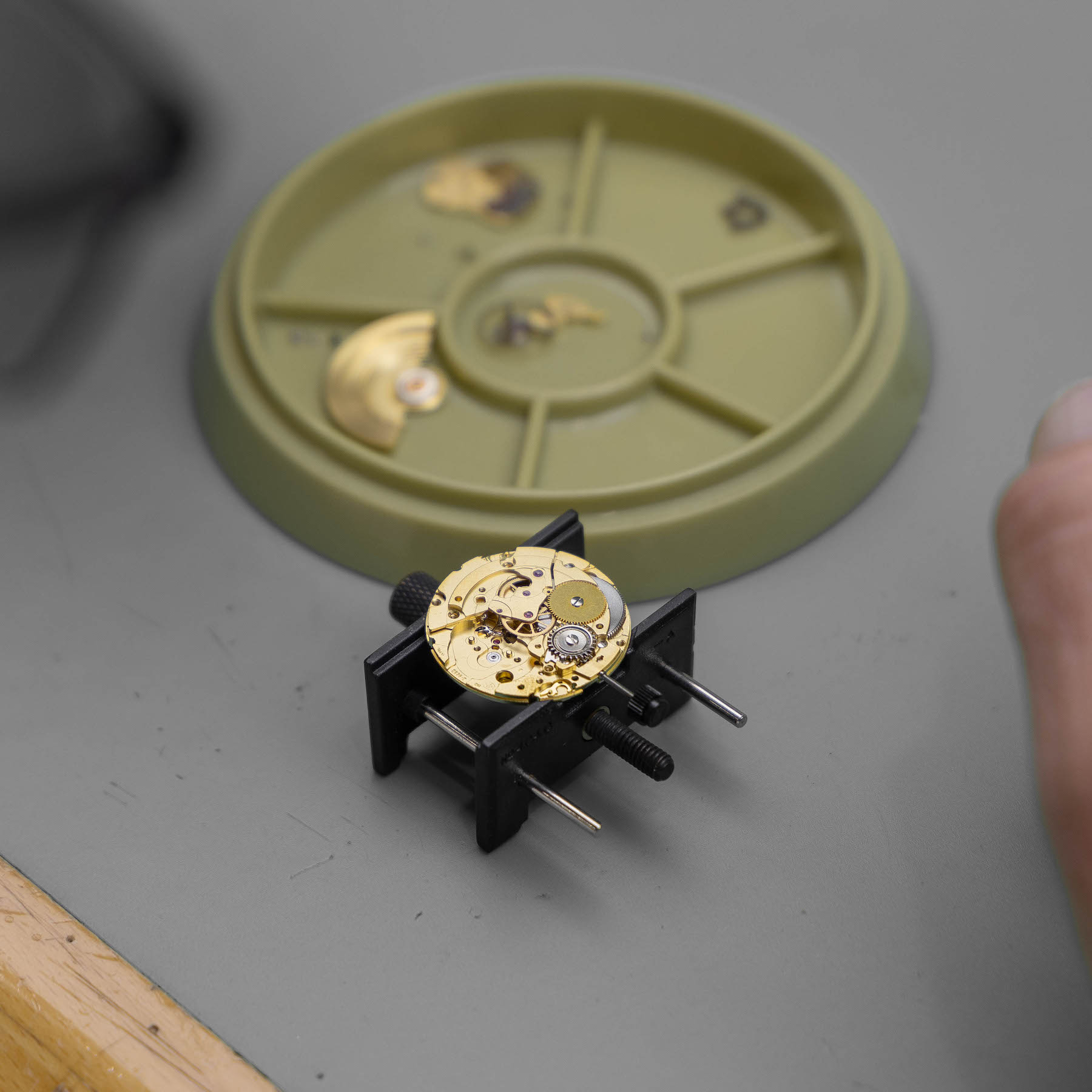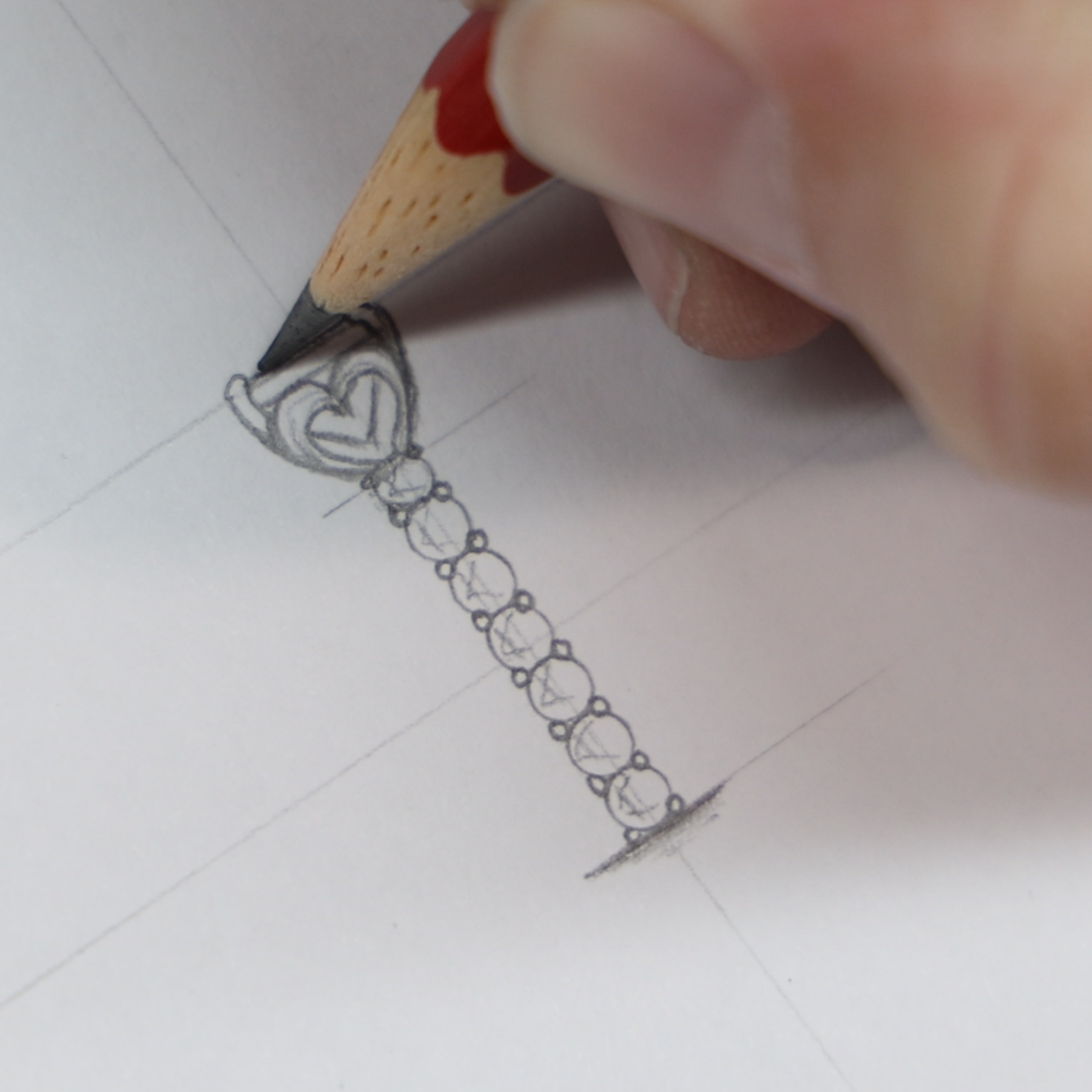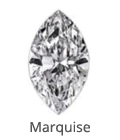
Diamond Buying Guide
Before you begin your search for that perfect engagement ring, it’s important to understand what you’re looking for and what you’re buying.
Services
Cut
The value of a diamond is determined by what is commonly referred to as the four Cs.
Cut, Colour, Clarity, and Carat
This guide will help you understand what each means so that you are well informed prior to choosing your diamond. Our knowledgeable staff are also on hand to ensure you purchase the very best value within your budget. Make an appointment with one of our diamond specialists.
The cut of a diamond describes the reflective qualities of a diamond; it gives it its unique sparkle and brilliance.
While nature determines a diamond’s colour, clarity and carat, a master craftsman is needed to create its cut. Numerous flat surfaces, otherwise known as facets, are cut over the entire diamond. Diamonds are usually multi-faceted, so that light can travel through the diamond and then the facets can refract light from each other, creating a sparkle.
The cut of a diamond is very important because it affects the overall proportions of the diamond, which in turn affect how light interacts when it passes through the diamond and is then seen by the eye.
For example, the cut of a modern brilliant cut diamond is designed to maximise the amount of scintillation or brilliance. This is the amount of white light refracted back to the eye so you can see the prismatic light display, which is commonly called the rainbow effect.
Light reflection is determined by how well the diamond is cut – this is what is graded and scored on diamond certificates. Cuts are graded from an ideal cut through to a poor cut. When a diamond is well cut, light enters and reflects back through the observer’s eye, which leads to brilliance. When poorly cut, the light enters and leaks out of the sides or the bottom, meaning less brilliance.
Hearts On Fire has developed proprietary technology that has allowed the company to claim the title of ‘The World’s Most Perfectly Cut Diamond’. It promises that each Hearts On Fire diamond is cut perfectly every single time. To ensure a perfect, high-quality cut, Hearts On Fire only crafts round or square ‘Dream®’ diamonds – the name for the Company’s patented square cut. Smales is the exclusive retailer of Hearts On Fire diamond jewellery in Western Australia.
Learn more about Hearts On Fire diamonds here.
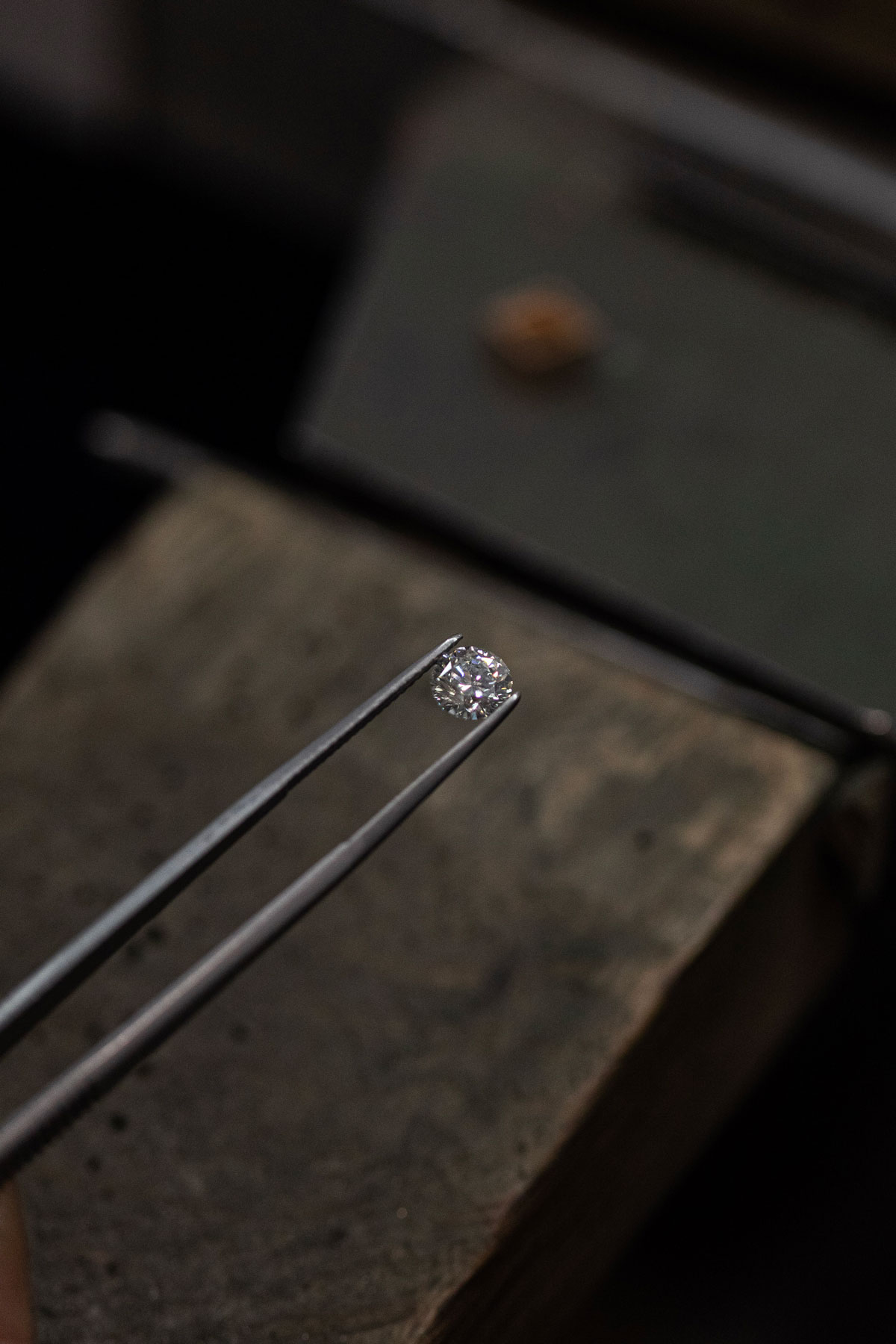
Diamond Shape
A diamond’s cut can also refer to the outline shape of the diamond (round, oval, pear, etc.). The most popular shape is the 58 facet round brilliant. All others are classified as fancy shapes or modified round brilliants.
Popular Diamond Cuts

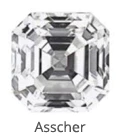
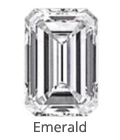
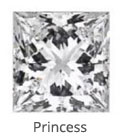
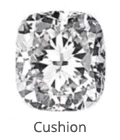
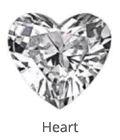
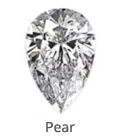
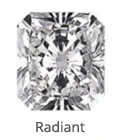
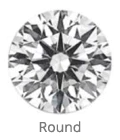
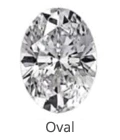
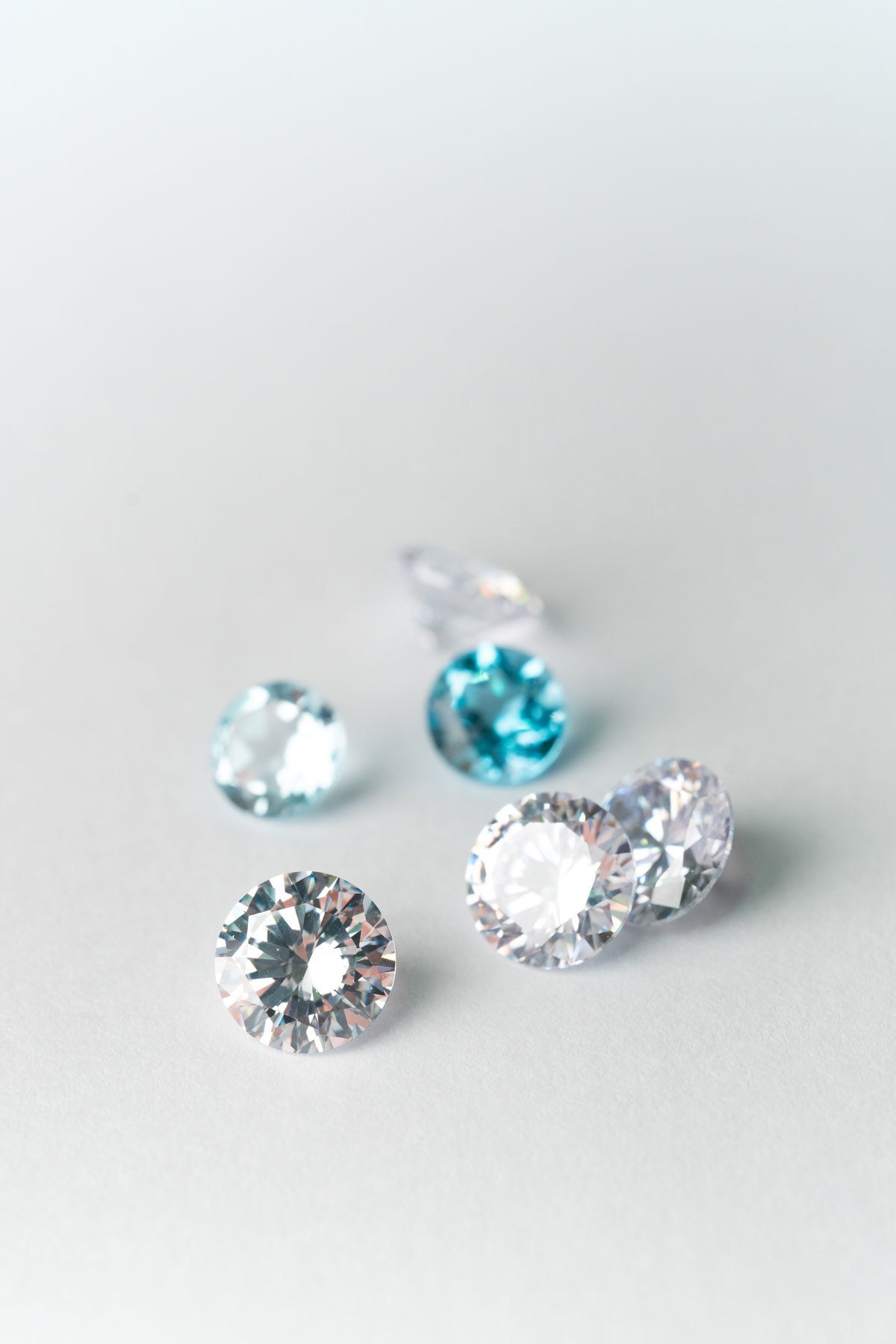
Services
Colour
White (or colourless) diamonds
White diamonds are traditionally the most popular for engagement rings.
Many diamonds may appear colourless or white. However, subtle yellow or brown tones may be detected. The closer a diamond is to colourless, the rarer and more valuable it will be.
As colourless diamonds allow more light to pass through them than a ‘coloured’ diamond, colourless diamonds emit more sparkle.
The colour of a modern brilliant cut white diamond is produced by the absorption of white light and is dependent on the amount of, and nature of, trace elements within the crystal structure. Because of this variance, jewellers are able to grade the colours into a standard system that can be applied to white diamonds.
To assess the ‘colour’ of a white diamond, most jewellers use a colour grading system that ranges from colourless to tones of yellow and brown.
Diamonds categorized with the letters D, E, and F are considered to be exceptional white gems, with letters G through L signifying less valuable stones. Categories represented by letters M through Z are considered to be “tinted” diamonds.
Fancy (or coloured) diamonds
Coloured diamonds are graded on the intensity of their colour, as opposed to lack of it. They are graded within a different system and do not follow the rules for white diamonds.
The most common coloured diamonds are yellow, brown (champagne and cognac), blue, green, and pink. Diamonds sold for their colour are labelled as “fancy” diamonds and some can rival exceptional white diamonds in cost.
Services
Clarity
Clarity is the term used to describe the microscopic traces of non-crystallised carbon. It is these traces or ‘inclusions’ that make every diamond unique.
Inclusions include flaws such as air bubbles, cracks and mineral substances. Blemishes include scratches, pits and chips.
Large inclusions will interfere with the dispersion of light and therefore the diamond’s brilliance, so there is more value in a diamond that has fewer inclusions.
Jewellers examine diamonds using a magnifying system to assess inclusions and blemishes, as many are invisible to the naked eye.
Diamonds with exceptional clarity have minute inclusions that would be very difficult to see even with magnification. Diamonds with large inclusions are sometimes seen without the aid of magnification. Every natural diamond has very small inclusions within its crystal structure; a unique fingerprint which enables the diamond to be categorised into different grades of clarity.
As with colour, there are numerous grading systems used through the world. In Australia the most commonly used system is Flawless through to Pique 3. This system uses the following range: Flawless (F), Internal and External (IF), Very Very Slight Inclusions (VVS), Very Slight Inclusions (VS), Slightly Included (SI), Imperfect 1 (I1), Imperfect 2 (I2) and Imperfect 3 (I3).
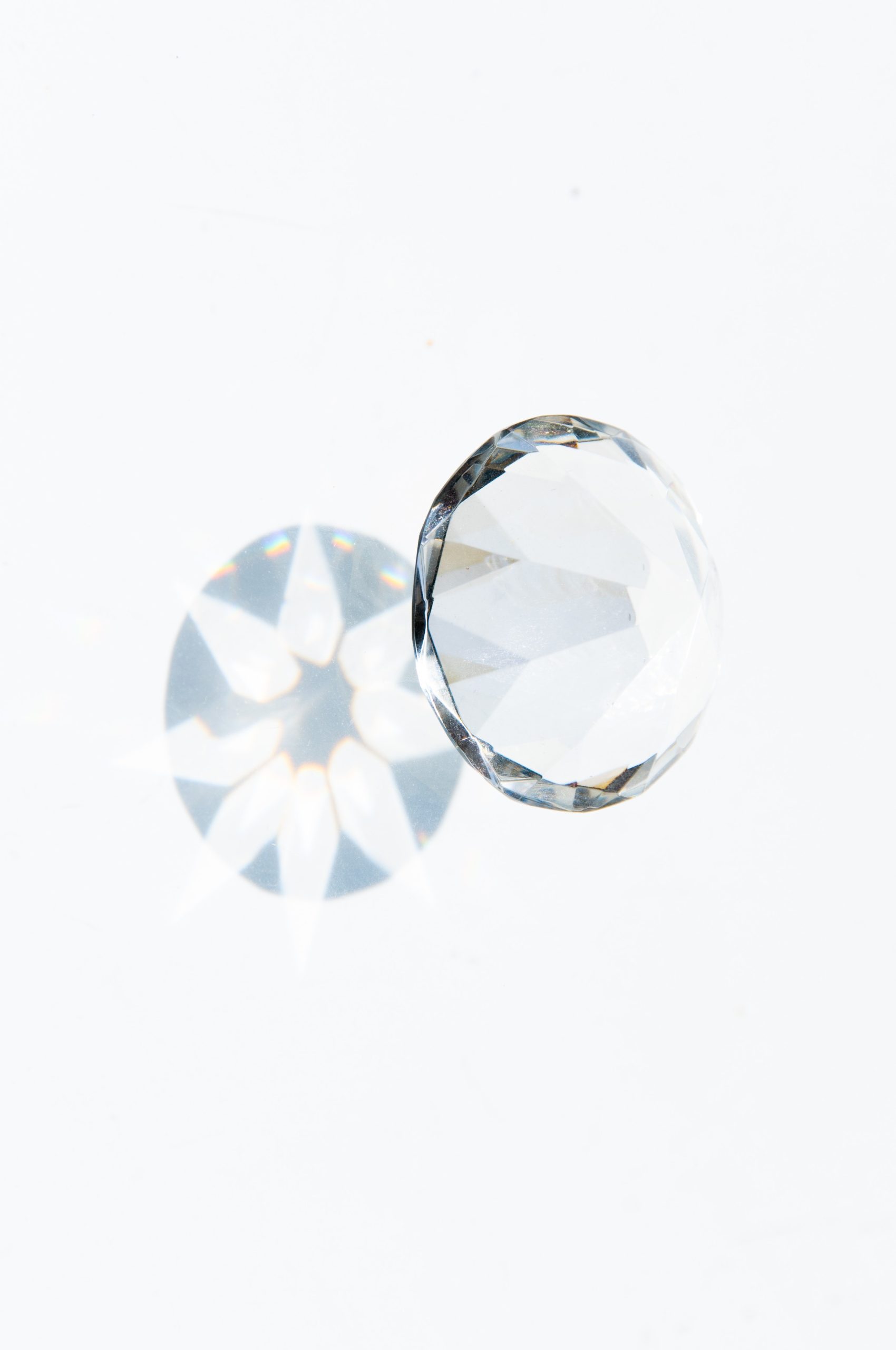
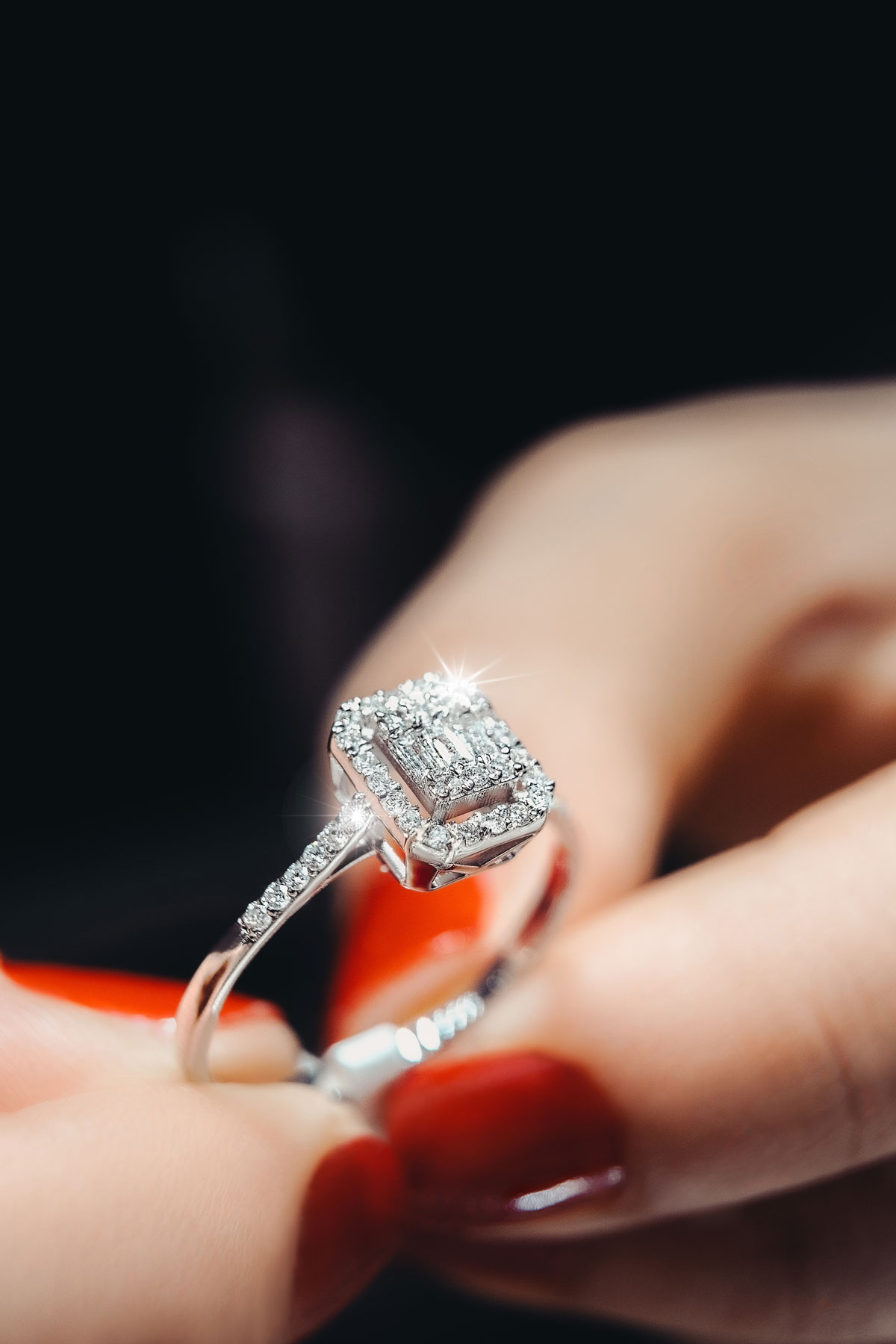
Services
Carat
Diamonds are measured in weight. Their mass is measured, and the units of measurement are called carats. One carat of a diamond has a weight of 200 milligrams or 0.2 grams.
When looking at measurements, each carat is divided into 100 points, so a diamond of 0.01ct will be 100th of a carat or a diamond of 0.50ct will be half a carat.
Services
Making your choice
A diamond with high cut, quality, clarity, carat and colour may sound good in theory but it won’t fit everyone’s budget.
To find the best diamond that fits into your price range, you will need to compromise between the four Cs.
A large diamond can be alluring, but big isn’t always better. Our advice is buy a well cut diamond with the highest colour and clarity grade that fits your budget.
However, if size is important, you can choose a large diamond but you may have to sacrifice lower colour, clarity and cut grades.
Whatever you choose, make sure you request a certificate with the diamond’s grading.
Our knowledgeable staff are on hand to ensure you purchase the very best value within your budget.
Make an appointment with one of our diamond specialists today.
